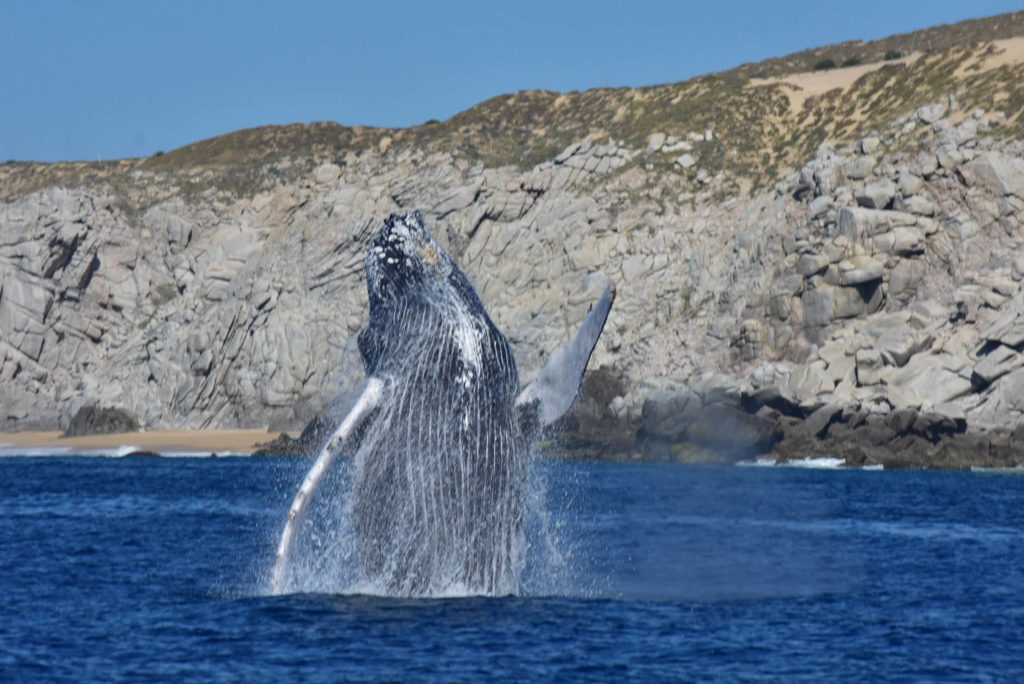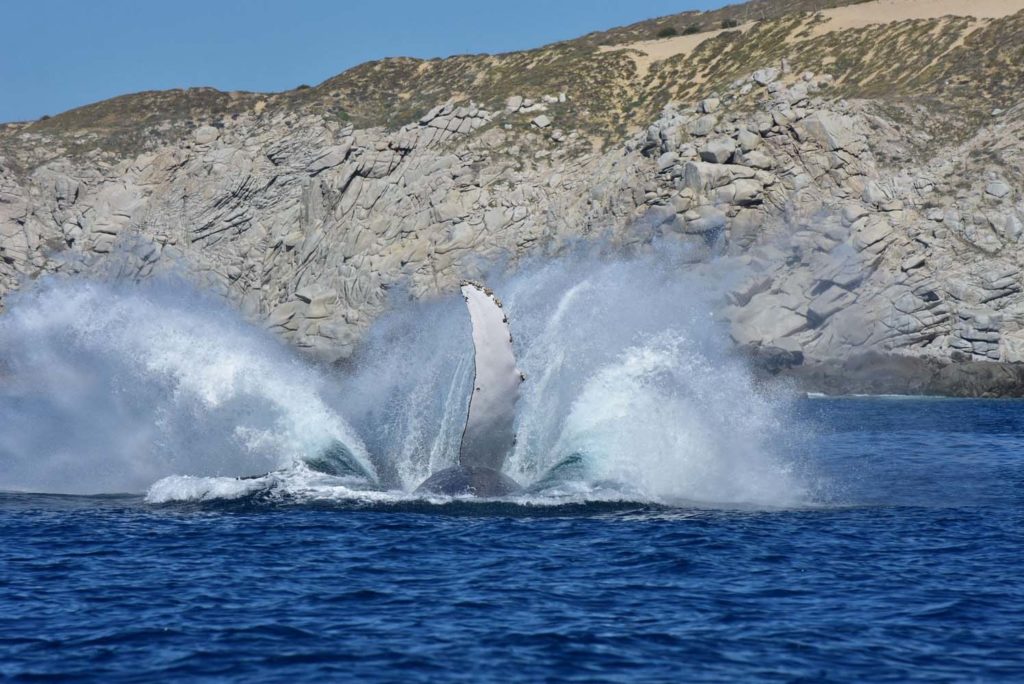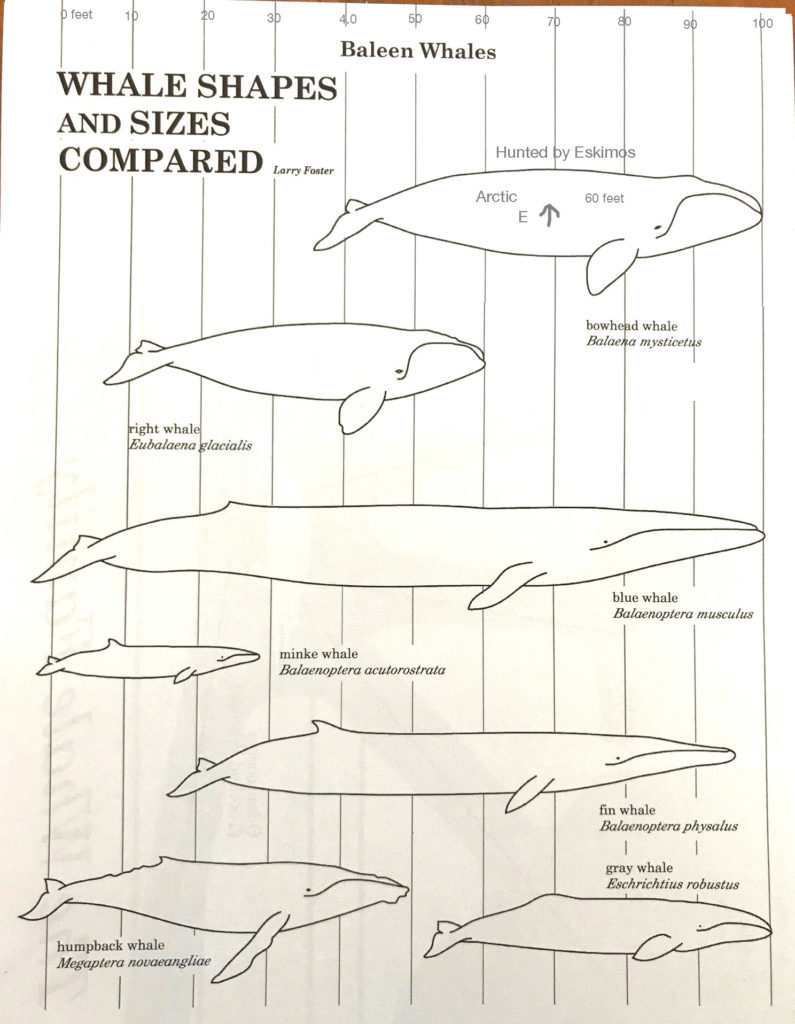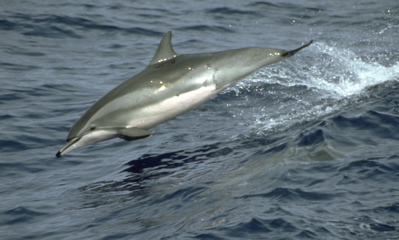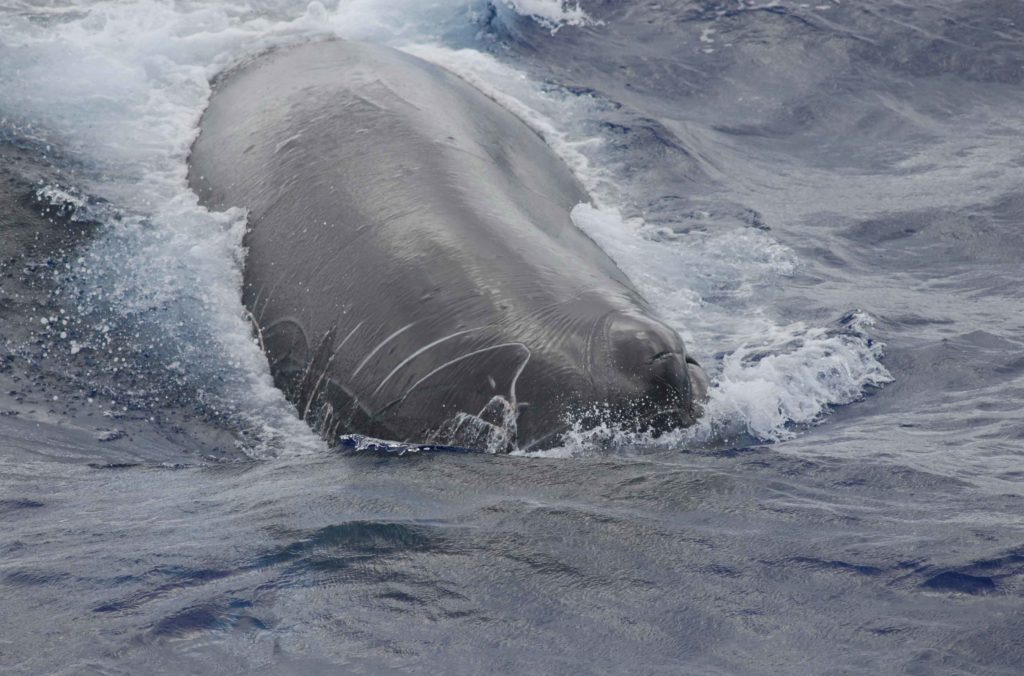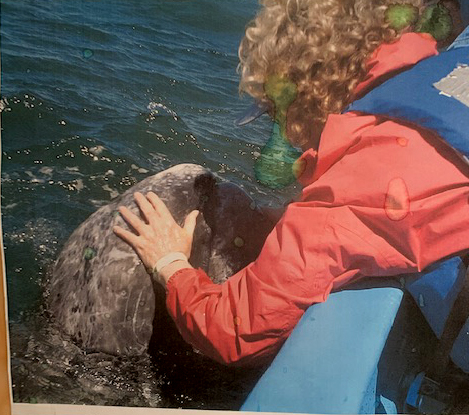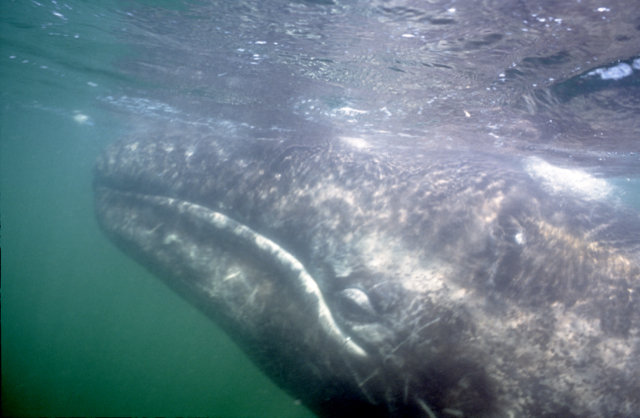“Getting to see these majestic, gentle creatures breaching was incredible. Of course, I know that whales are huge, but it wasn’t until they breached that I got a real sense of their size.” Jen Ganley
It was with great joy that I spent seven years of my life on ships and at shore stations studying baleen whales. Then over 25 years ago, Stephen Bolles and I teamed up to write the book, Getting to Know the Whales (Available on the right sidebar)
Whale Week
1. Introducing Baleen Whales
2. Types of Baleen Whales
3. Language Arts and Whales
4. How Whales Feed
5. Blue Whale Flip Book
6. Art and Whales with Karen Anderson
7. Before you go….
Thanks to artist, Karen Anderson, illustrator, Stephen Bolles contributed his work. Mark Storck and Cynthia Eyden contributed their naturalist perspective. Diane Kaplan, Jen Ganley, Andrew Macfarlane, Jane Ball, Cynthia Eyden, and Jim Cotton shared their stories with us. Lastly, thanks to Janine Pung for her suggestions on how to improve the text.
Diane Kaplan’s observation of a whale breach:
“It is impossible not feeling the powerful energy that emanates from Humpback Whales. When you are close and they breach the full size and power of them is amazing. Everybody always gasps and “oohs and ahhs” when their bodies slam against the water. Tremendous gift.”
1. Introducing Baleen Whales
What to do:
a. In this activity, you will read about the baleen whales program. I hope you enjoy the photos. Then you will use the activity sheet to answer questions about each animal.
b. Click here to view the program on Baleen Whales
c. Download and print the Baleen Whales student worksheet
Click here for the PDF.
2. Types of Baleen Whales
For 2000 years, humans have been killing whales. But in 1986, there was a world-wide ban on whaling. However, Japan, Iceland and Norway still hunt a small number of whales. In this activity you will be learning where different species of whales are found, if they are endangered, if they have recovered from whaling, and special notes about each whale.
What to do:
a. Download and print the “Baleen Whale Facts” page (Click here).
b. Download and print the “Whale Sizes” page (Click here).
c. Write the information from the “Baleen Whale Facts” page on the “Whale Sizes” page (see the bowhead whale example below).
d. Use the following symbols: E = Endangered. Arrow up = population increasing.
Arrow down = population decreasing.
e. Each whale should have:
1. its size
2. where it is found
3. whether the population is endangered, increasing or decreasing
4. a fact about the animal (see the the Bowhead example below)
3. Language Arts and Whales
In this activity, you are going to read the four stories about encounters with whales by whale watchers (don’t miss Jane Ball’s story at the end of the post). Then you will choose one of the three stories and use it to write a fictional story using facts from the story.
What to do:
1. Read the three stories and chooset which one you want to write about.
2. Write down some of the facts from the story.
3. Take on the persona of one of the animals and write your story from the whale’s or dolphin’s perspective. Record your story in your nature notebook.
4. When you complete your story, read it to an adult you live with.
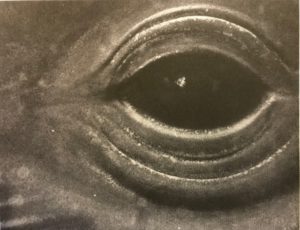 a. Andrew Macfarlane’s Story
a. Andrew Macfarlane’s Story
“I was studying right whales and a curious young right whale approached the zodiac (motor boat) and was hanging around us. I eased into the water and I swam down to the whale’s eye-level and looked into his eye – it was a large eye! I have no idea what the whale experienced, but for me it was a very thrilling moment – to be that close to another species and gaze into its eye. I used to dream of holding a whale in my arms. Looking at a whale “eye-to-eye” is not quite like holding it in my arms, but it was pretty darn close to that.”
Andrew Macfarlane, whale biologist, Peninsula Valdes, Argentina, 1977
b. Cynthia Eyden’s story
“I was on a 42-foot schooner sailing off the Pacific coast of Mexico and Central America. It was not uncommon to see large streams of dolphins migrating from one horizon to the other. It was also a huge delight to be up at night sailing under the stars and see the ocean light up with bioluminescence next to our prow while the dolphins played and rode our wake! It was like being in a fairy tale! One morning, my friend, Tom, had something hooked on his fishing pole and it was putting up a tremendous fight. Just then, two dolphins raised themselves out of the water in unison and were very excitedly “talking” to us. I told Tom that I thought the dolphins were telling us we had one of their own on the line and we needed to release it. Finally, we cut the line and instantly the dolphins dove in unison. That was answer enough for me, but a few minutes later they returned, said “thank you” and together dove back into the deep sea.
It was magical. I felt a kinship with the dolphins as they communicated with us – really on a heart level. I realized that they figured out the problem and they came to us and trusted us to do something to help! It was the first inter-species communication I had ever experienced and it changed my understanding of our universe. I had “thought” dolphins were intelligent. Now I KNEW they were – and that they take care of each other! That moment still moves me.”
Cynthia Eyden, 1971
c. Jim Cotton’s Story
“I have spent most of my adult life at sea studying whales and in all that time I never saw a sperm whale come as close to a ship as this one did. It happened like this: two teen-aged whales were swimming with a female and evidently these young whales thought the ship was too close, so one of the youngsters turned and swam towards us. All of a sudden, this young animal began swimming very fast and headed directly towards the front of the ship and rammed us with its head making our steel ship shutter! Wow, I bet the whale had a headache after that.’
Jim Cotton, whale biologist
4. How Whales Feed
In this activity you will learn different feeding strategies of whales. There are whales that hunt in packs, skim plankton at the surface, and a whale that dives deep for food
What to do:
1. There are two pages to download. To print both pages, click here. Put the pages in your nature notebook.
2. Read the information and write the name of the feeding behavior in the correct box.
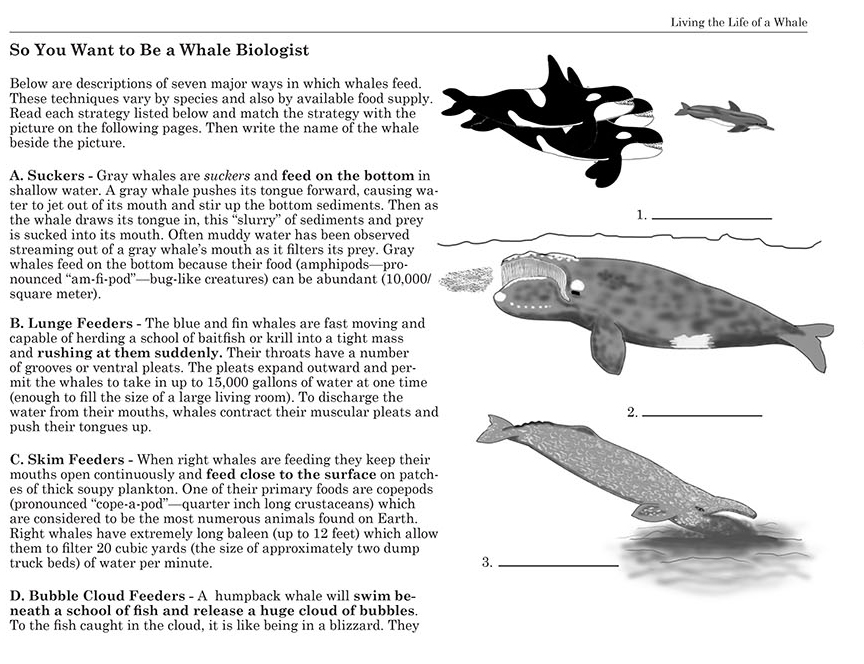
Answers: 1. Wolves of the Sea, 2. Skim Feeder, 3. Suckers 4. Bubble Cloud Feeder 5. Grabber 6. Lunge Feeder 7 Deep Diver
5. Blue Whale Flipbook
What to do:
1. Download the pages needed to complete the activity. To print them click here. 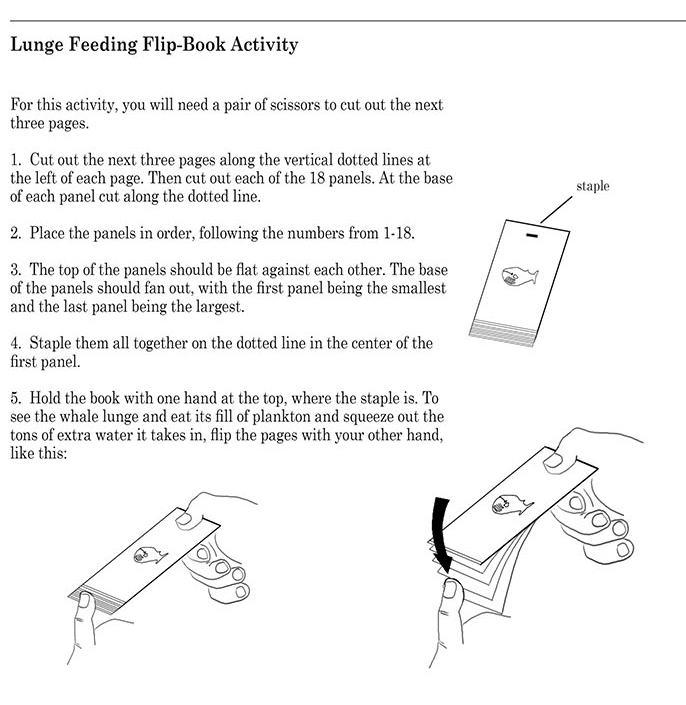
6. Art and Whales with Karen Anderson
Our artist in residence, Karen Anderson, continues our drawing lessons for the 10th straight week. This week she shows you how to draw a dolphin and two types of whales.
What to do:
a. Practice your drawings in your nature notebook by using Karen’s handouts, “Dolphin” and “Whale.”
b. To download and print “Dolphin” (shown below), click here.
c. To download and print “Whale” (shown below), click here.
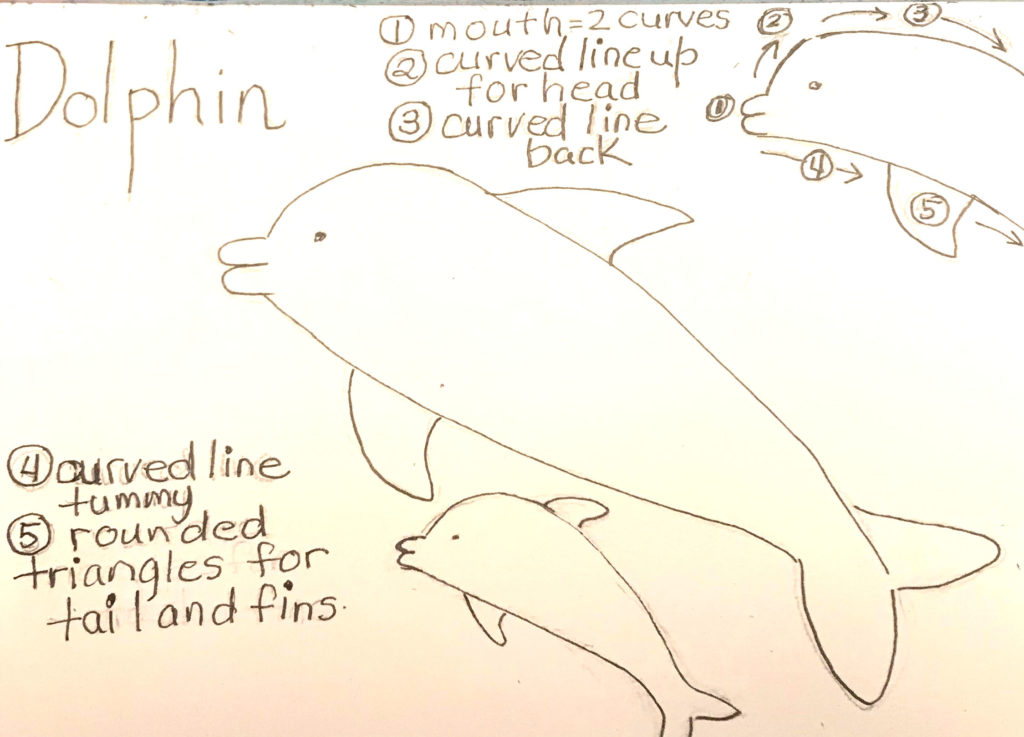
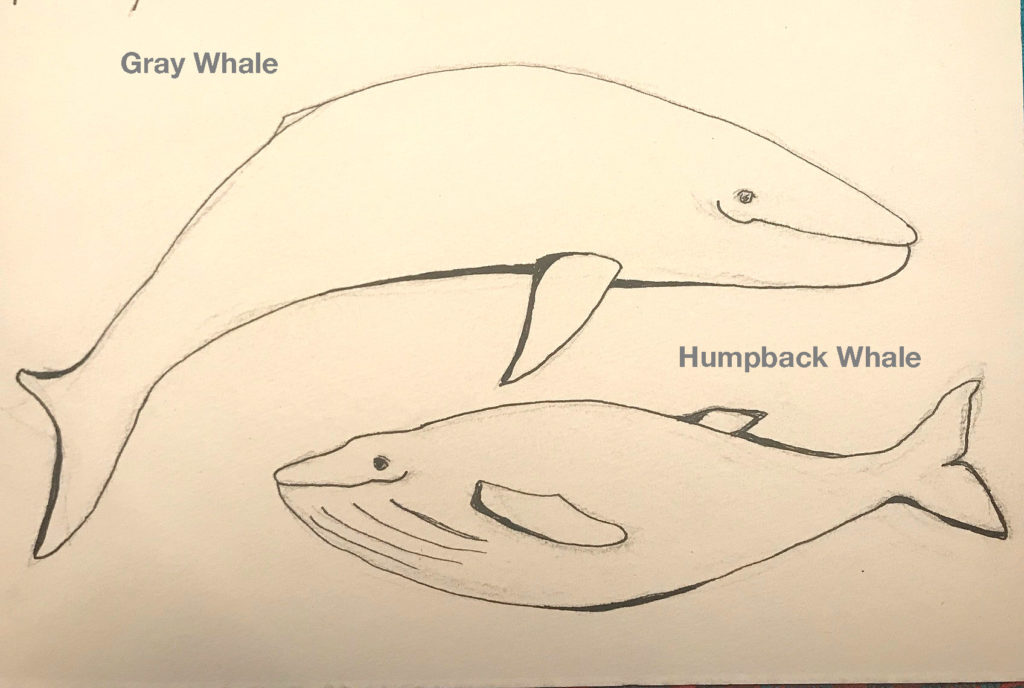
7. Before you go…
Story and photos by Jane Ball
“In the winter, the gray whales migrate to shallow water lagoons off Baja California, to have their calves and mate. In the 1800’s, American whalers discovered the whales in the lagoons and the whales were slaughtered until they were almost extinct. Whalers called the gray whales “devil fish” because they would ram the whaling boats and sink them. That reputation carried over to the fisherman.
Fast forward to the 1980’s when a Mexican fisherman overcame his fear and made friends with a whale in the lagoon. Whale watchers began to flock to San Ignacio Lagoon to experience the “friendly whales.”
I was at San Ignacio Lagoon in 2008 to see the gray whales. The female gray whales would bring their calves over to the boats to introduce them to the whale watchers. The mother whales would prop the calves up with their backs so that the calf was level with the boat. It was amazingly sweet. Touching a whale is very special. The skin is smooth, except for the barnacles and whale lice. Our hand touches such a small part of the whale that it is difficult to get a sense of the immensity of the animal. The most amazing part of the experience is that the whale is there to be touched at all. In spite of the incredible amount of harm and murder that humans have done to the gray whales, the fact that they can forgive us enough to bring their babies to the boat and allow us to touch them, is the purest gift a mortal can receive.”

